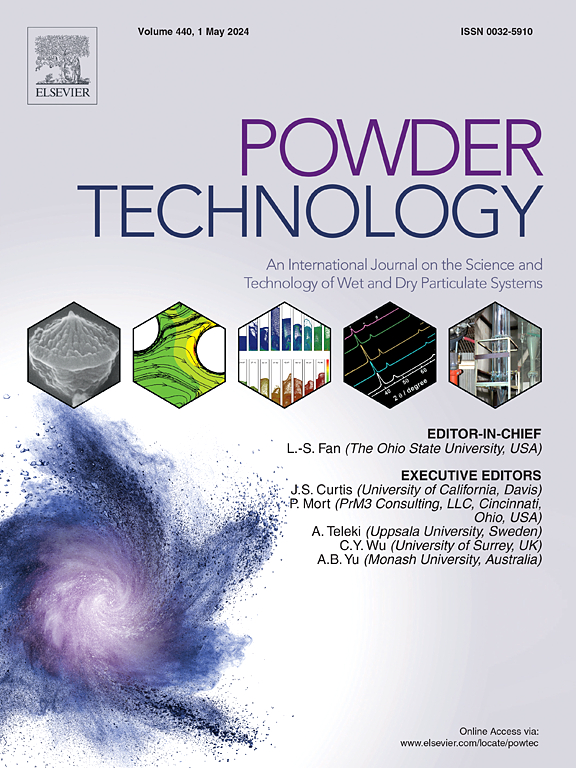Degradation of methyl orange in water using RPB-prepared iron nanoparticles and persulfate
IF 4.5
2区 工程技术
Q2 ENGINEERING, CHEMICAL
引用次数: 0
Abstract
A rotating packed bed (RPB) with blade-packing and the liquid-phase reductive precipitation means were utilized to prepare iron nanoparticles. Methyl orange (MO) in water was degraded using the RPB-prepared iron nanoparticles as an activator of persulfate. The degradation of MO in the RPB-prepared iron nanoparticles/persulfate process was greatly fitted by the pseudo-first-order kinetics. The higher initial rate of degradation of MO was associated with lower pH, a larger dose of iron nanoparticles, or a higher sodium persulfate concentration. More MO was degraded at lower pH or a higher sodium persulfate concentration. Increasing the dose of iron nanoparticles from 0.007 g/L to 0.056 g/L enhanced the degree of degradation of MO in 20 min but further increasing the dose of iron nanoparticles to 0.112 g/L reduce the degree of degradation of MO in 20 min. According to radical quenching tests at pH 3, SO4•− contributed more than HO• to the degradation of MO in the RPB-prepared iron nanoparticle/persulfate process. At 25°C, pH 3, a dose of RPB-prepared iron nanoparticles of 0.028 g/L, a sodium persulfate concentration of 0.24 g/L, and an initial MO concentration of 10 mg/L, the degree of degradation of MO in 20 min was 93%, which markedly exceeded that (47%) achieved using iron nanoparticles that were prepared using a batch reactor with persulfate under the same operating conditions. Therefore, RPB-prepared iron nanoparticles with persulfate effectively degrade MO in water.

rpb制备的铁纳米颗粒和过硫酸盐降解水中甲基橙
采用叶片填料旋转填充床(RPB)和液相还原沉淀法制备铁纳米颗粒。用rpb制备的铁纳米颗粒作为过硫酸盐活化剂,降解水中的甲基橙(MO)。rpb制备的铁纳米颗粒/过硫酸铁工艺对MO的降解符合准一级动力学。较高的初始MO降解速率与较低的pH、较大剂量的铁纳米颗粒或较高的过硫酸钠浓度有关。在较低的pH和较高的过硫酸钠浓度下,MO的降解率较高。将铁纳米粒子的剂量从0.007 g/L增加到0.056 g/L,在20 min内提高了MO的降解程度,但将铁纳米粒子的剂量进一步增加到0.112 g/L,在20 min内降低了MO的降解程度。根据pH 3的自由基淬火试验,在rpb制备的铁纳米粒子/过硫酸盐工艺中,SO4•−对MO的降解作用大于HO•。在25℃、pH为3、rpb制备的铁纳米颗粒剂量为0.028 g/L、过硫酸钠浓度为0.24 g/L、MO初始浓度为10 mg/L的条件下,20 min内MO的降解率为93%,明显超过了在相同操作条件下用过硫酸钠间歇反应器制备的铁纳米颗粒的降解率(47%)。因此,含过硫酸盐的rpb制备的铁纳米颗粒可以有效地降解水中的MO。
本文章由计算机程序翻译,如有差异,请以英文原文为准。
求助全文
约1分钟内获得全文
求助全文
来源期刊

Powder Technology
工程技术-工程:化工
CiteScore
9.90
自引率
15.40%
发文量
1047
审稿时长
46 days
期刊介绍:
Powder Technology is an International Journal on the Science and Technology of Wet and Dry Particulate Systems. Powder Technology publishes papers on all aspects of the formation of particles and their characterisation and on the study of systems containing particulate solids. No limitation is imposed on the size of the particles, which may range from nanometre scale, as in pigments or aerosols, to that of mined or quarried materials. The following list of topics is not intended to be comprehensive, but rather to indicate typical subjects which fall within the scope of the journal's interests:
Formation and synthesis of particles by precipitation and other methods.
Modification of particles by agglomeration, coating, comminution and attrition.
Characterisation of the size, shape, surface area, pore structure and strength of particles and agglomerates (including the origins and effects of inter particle forces).
Packing, failure, flow and permeability of assemblies of particles.
Particle-particle interactions and suspension rheology.
Handling and processing operations such as slurry flow, fluidization, pneumatic conveying.
Interactions between particles and their environment, including delivery of particulate products to the body.
Applications of particle technology in production of pharmaceuticals, chemicals, foods, pigments, structural, and functional materials and in environmental and energy related matters.
For materials-oriented contributions we are looking for articles revealing the effect of particle/powder characteristics (size, morphology and composition, in that order) on material performance or functionality and, ideally, comparison to any industrial standard.
 求助内容:
求助内容: 应助结果提醒方式:
应助结果提醒方式:


